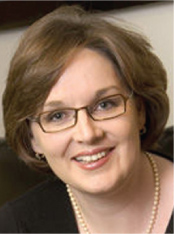
Market pressures and new government regulations are putting a strain on credit unions, and, specifically, their back offices. These organizations work hard to absorb wave after wave of new rules and regulations while maintaining the high level of service that is the hallmark of any successful credit union.
However, through these challenges, company executives are discovering the importance of keeping their back office people, processes and technologies in near-perfect alignment. Achieving this alignment is made more difficult because of the patchwork collection of computer systems employed by many credit unions.
Recommended For You
Whether by mergers and acquisitions, the addition of new services or products, government regulation requirements or just the regular adoption of new technology solutions, many credit unions tend to utilize a number of disparate applications in their back offices. While these applications have been heavily customized to work together, they are often not optimized to the needs of the back office knowledge worker. As a result, these individuals struggle with having to navigate a complex maze of screens and applications to perform even the simplest of tasks.
Thankfully, there is a straightforward, two-step process for untangling this complicated web of applications and creating a simple unified desktop for the back office worker.
Step #1: Analysis
The first step is to obtain an accurate view of how your workers are performing using activity intelligence tools. These solutions give managers a clear view of how back office employees are working and reveal any bottlenecks in the system. Many back office managers do not have an accurate understanding of how employees are performing, or how the systems and technologies in place are affecting their performance.
Understanding how employees use their systems, where they go to obtain information and how long it really takes to perform required activities is key to establishing a performance baseline.
The best activity intelligence tools perform this analysis from data collected from the workers' desktop systems. Why the desktop? Because the back office knowledge worker's desktop is the nexus of where all transactions take place. It is a treasure trove of information for analyzing and improving their work processes.
Activity intelligence tools leverage big data technologies to capture scores of activity data from the desktop to provide meaningful insight into how workers are performing and how they are leveraging the systems and applications on the desktop.
Step #2: Automation
Once the analysis phase has been completed and you have a good grasp of how your back office is performing, you can leverage that knowledge in the automation phase. Desktop automation solutions are used to automate repetitive tasks, create a unified desktop and untangle the complex knot of back office applications.
Simplifying work processes keeps employees focused on performing their jobs properly rather than navigating complex, disconnected systems. From a training point of view, this is also a more cost-effective path. Training knowledge workers to learn one comprehensive screen or a few dynamic service workspaces is far more efficient than having to teach them to use 12, 15, or 20 or more systems. This shaves off time required in the training room and gets workers up to speed more quickly.
Step #3: Compelling Results
A large financial institution recently used this analysis and automation approach to double fraud caseload capacity without adding staff. The financial institution's back office staff is responsible for processing continuous transaction fraud alerts for debit cardholders. This is a complicated, manual process that does not scale well.
After a thorough analysis, the company leveraged a desktop automation solution to integrate multiple legacy applications and streamline key fraud-related workflows.
The company also built an application bar to provide knowledge workers visibility into fraud processes. The desktop toolbar lets back office knowledge workers monitor system processes and only intervene in cases of downtime, errors, or fraud adjudication.
As a result, the financial institution doubled the number of fraud cases processed without adding additional staff.
Anna Convery is EVP of strategy at OpenSpan. She can be reached at 678-527-5400 or [email protected].
© 2025 ALM Global, LLC, All Rights Reserved. Request academic re-use from www.copyright.com. All other uses, submit a request to [email protected]. For more information visit Asset & Logo Licensing.






